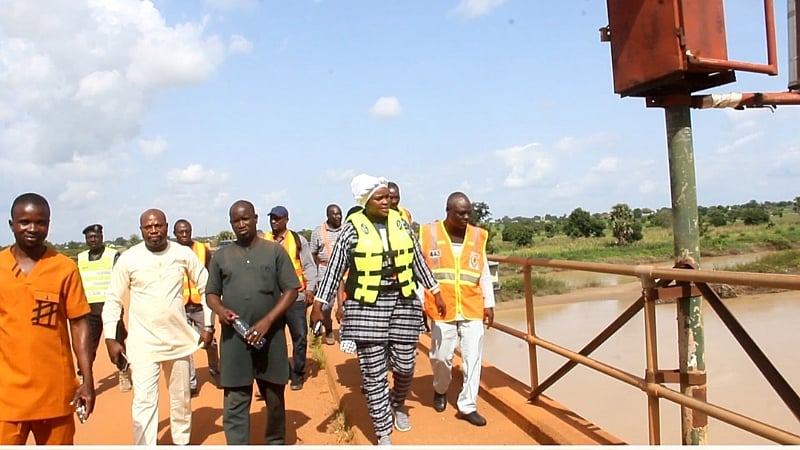The National Disaster Management Organisation (NADMO) in Ghana’s Upper East Region has issued a stern warning to residents inhabiting areas along the Black and White Volta Rivers, urging them to relocate to higher ground in anticipation of the impending spillage from the Bagre and Kupeinga dams. Madam Rebecca Ashamawu Akolgo, the Regional Director of NADMO, emphasized the gravity of the situation during a visit to the confluence of the two rivers at Galaka in the Bawku West District. This visit was part of a broader sensitization campaign to educate communities about the imminent spillage and to discourage any activities near the riverbanks. The warning comes as Burkina Faso prepares to open the Bagre Dam, and with the Kupeinga Dam in Togo also at critical levels, compounding the flood risk for downstream communities in Ghana.
Madam Akolgo stressed the potential for widespread flooding, predicting that floodwaters could extend up to two miles from the riverbanks, placing residents and their properties in significant danger. She highlighted the devastation already witnessed in Burkina Faso, where overflowing water has destroyed vast swathes of farmland and displaced numerous residents. This serves as a stark reminder of the potential impact of the impending spillage on Ghanaian communities. The urgency of the situation is underscored by the daily updates NADMO receives from Burkinabe authorities, confirming the scheduled spillage from the Bagre Dam. This constant communication allows for a proactive approach to disaster preparedness and mitigation, crucial in minimizing the impact on vulnerable populations.
The District Chief Executive of Bawku West, Hon. James Ayamwego, echoed NADMO’s warning, appealing to farmers and residents to prioritize their safety over their possessions. He acknowledged the significant investments made in farms and the potential economic hardship, but emphasized that protecting lives is paramount. He reassured the affected communities that the government is committed to addressing the losses incurred due to the flooding. This assurance is intended to encourage compliance with the evacuation orders and prevent individuals from risking their lives to protect property. The collaborative effort between NADMO and local authorities highlights the comprehensive approach to disaster management, ensuring a coordinated response to the impending crisis.
Hon. Ayamwego further appealed to community leaders, including chiefs, elders, assembly members, and other stakeholders, to play an active role in disseminating the safety message. Their influence and deep-rooted connections within the communities are vital in ensuring the message reaches even the most remote areas. This community-based approach to disaster preparedness strengthens the overall response and increases the likelihood of successful evacuation and mitigation efforts. The focus on community engagement highlights the importance of local knowledge and cooperation in effectively managing disaster situations.
The NADMO team, in conjunction with local authorities, embarked on a tour of several flood-prone communities, including Sapeliga, Galaka, Guzongo, Salpiga, Kobore, and Timonde, all within the Bawku West District. This proactive measure allowed them to assess the specific vulnerabilities of each community and tailor the sensitization efforts accordingly. By directly engaging with residents in the affected areas, NADMO aims to ensure that the message is clearly understood and that residents are adequately prepared for the impending flood. This targeted approach ensures that resources and efforts are directed where they are most needed.
Beyond the Bawku West District, other districts also face a significant flood risk, including Binduri, Bawku Municipal, Garu, Nabdam, and Talensi. The widespread impact of the impending spillage emphasizes the importance of a regional approach to disaster management. Coordination between districts is crucial in ensuring a consistent and effective response across all affected areas. The identification of these at-risk districts allows for preemptive measures to be put in place, minimizing the potential damage and displacement caused by the flooding. The proactive approach taken by NADMO and local authorities aims to mitigate the impact of the spillage and ensure the safety and well-being of all residents in the affected areas.


